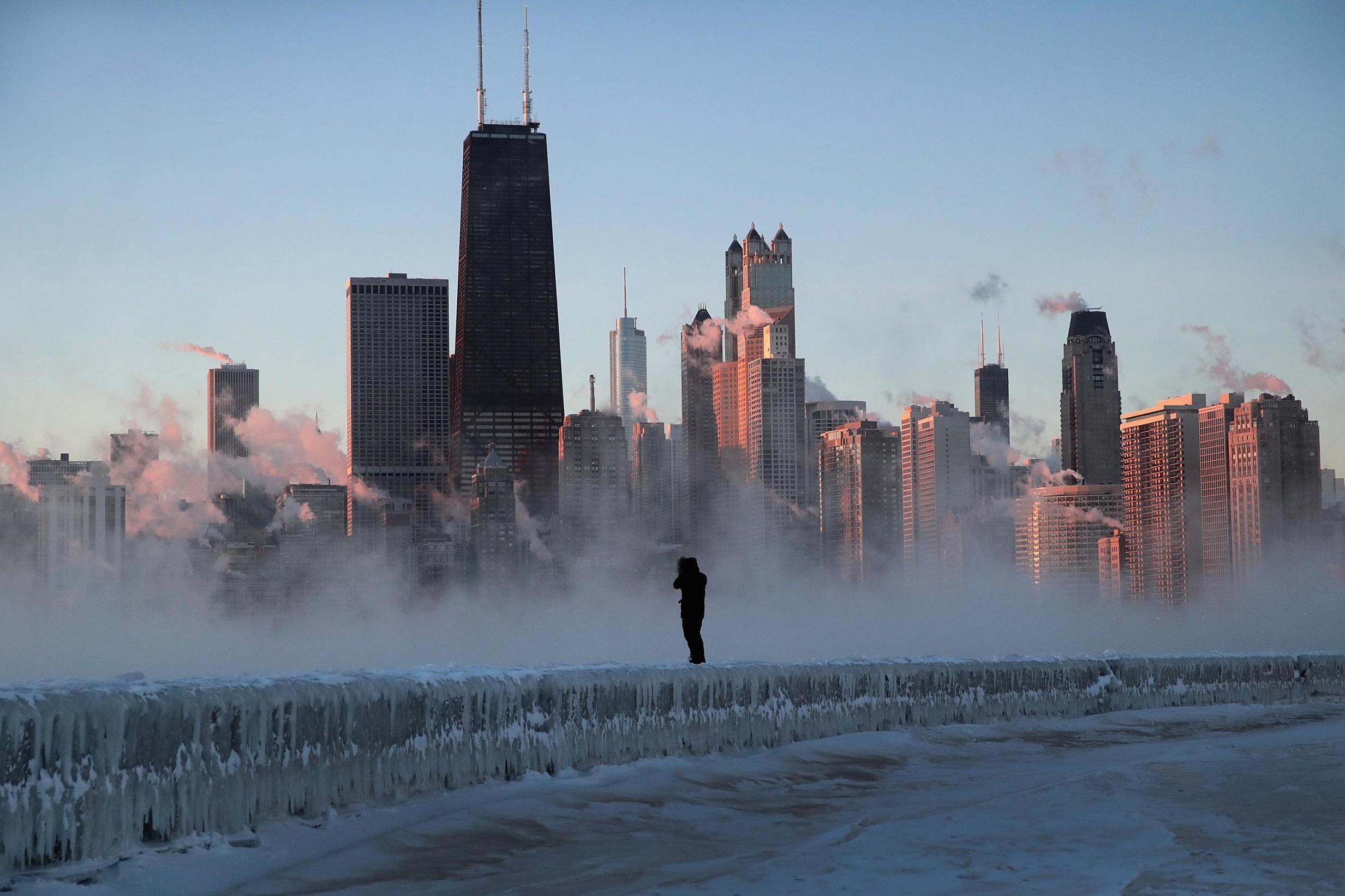Why is it so cold? Split in polar vortex brings historic deep freeze to US
The bitter cold sweeping across the US is the result of a split in the polar vortex

Your support helps us to tell the story
From reproductive rights to climate change to Big Tech, The Independent is on the ground when the story is developing. Whether it's investigating the financials of Elon Musk's pro-Trump PAC or producing our latest documentary, 'The A Word', which shines a light on the American women fighting for reproductive rights, we know how important it is to parse out the facts from the messaging.
At such a critical moment in US history, we need reporters on the ground. Your donation allows us to keep sending journalists to speak to both sides of the story.
The Independent is trusted by Americans across the entire political spectrum. And unlike many other quality news outlets, we choose not to lock Americans out of our reporting and analysis with paywalls. We believe quality journalism should be available to everyone, paid for by those who can afford it.
Your support makes all the difference.The US is currently experiencing historically cold weather, with Chicago dropping to a low of around -23F (-30C) on Wednesday – but what is the cause of this extreme drop in temperature?
A split in the polar vortex has been identified as the cause of the bitter cold that continued to sweep parts of the country on Thursday.
The polar vortex is a mass of cold air that usually stays bottled up in the Arctic.
But when the split occurred, that air spilled and traveled much further south than usual, causing a painfully cold weater system that put much of the Midwest into a historic deep freeze.
Temperatures still tumbled to record lows in some places on Thursday, though the weather was expected to start easing into Friday.
Record-breaking cold hit northern Illinois early Thursday, when the temperature in Rockford dropped to -30F (-34C). The previous record in the city, northwest of Chicago, was -27F (-33C) on 10 January, 1982.
The blast of polar air that enveloped much of the Midwest on Wednesday closed schools and businesses and strained infrastructure with some of the lowest temperatures in a generation. The deep freeze snapped rail lines, canceled hundreds of flights and strained utilities.

Chicago dropped to a low of around -23F (-30C), slightly above the city's lowest-ever reading of -27F (-32C) from January 1985. Milwaukee had similar conditions. Minneapolis recorded -27F (-32C). Sioux Falls, South Dakota, saw -25F (-31C).
Wind chills reportedly made it feel like -50F (-45C) or worse.
At least twelve people have died in weather-related circumstances. Some died in weather-related traffic accidents, others from apparent exposure to the elements.
Additional reporting by agencies.
Join our commenting forum
Join thought-provoking conversations, follow other Independent readers and see their replies
Comments